| The Sebring
"Sebring... to celebrate Maserati's victory in the 12 hour race." |
 |
||
|
|
|||
When I received a request for information on the Maserati Sebring from Harry, I decided to devote a page to this stylish but very under-rated sports coupé. It was only then that I realised how little has been written on this car. One of the finest articles, outside of road tests, was written by Andy Heywood, the Maserati Guru, for Auto Italia magazine and appeared in the May 2000 edition. |
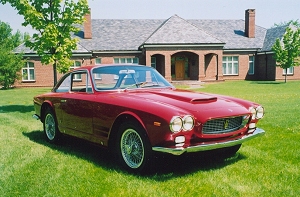 |
||
|
Following on the success of the 3500GT, in 1962, Maserati decided to offer an alternative 2+2 coupé, primarily aimed at the profitable American market, that was to be its logical successor. Designed by Alfredo Vignale, the man responsible for the design of the beautiful 3500GT Spyder, and it was on the same short-wheelbase chassis that he created the Sebring. Officially designated Tipo 101/10, the 3500GTIS (S for Sebring), was a steel-bodied (the bonnet and bootlid were made of aluminium) spacious two-seater with two smaller seats in the rear for 'legless', and I don't mean through the excesses of alcohol, passengers. |
|||
|
The Sebring, Series I, was presented in prototype form at the Geneva Motor Show in early 1962 and was later shown in its definitive form at the Turin Motor Show in 1963. The design was slightly more angular than the 3500 and gave the car a more compact and aggresive look. |
|||
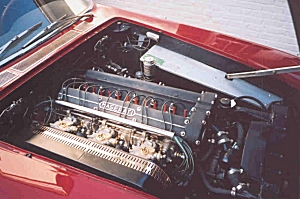 |
Earlier models of the Sebring were powered by the same well-proven 3485cc six cylinder engine as the 3500GT but engine capacity was later increased to 3694cc by lengthening the stroke from 100 to 106 mm. The benefits in torque and performance experienced with the later 3500GTs meant that the Lucas indirect fuel injection system became standard equipment. |
||
In testing (Autocar 1963), the Sebring achieved 137 mph and accomplished zero to sixty miles an hour in eight and a half seconds. All Sebrings were fitted with five-speed ZF gearbox. |
|||
The engine in Harry's car is now fitted with three Weber carburettors. Although the Lucas fuel injection system enhanced performance, some owners, especially in America, experienced reliability problems and replaced the fuel injection with the more reliable Weber carburettors. Harry tells me that with the Lucas fuel injection system there was also a problem with fuel contaminating the engine oil. |
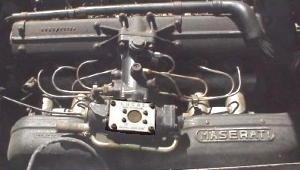 |
||
Although the standard Sebring was well equipped, Maserati offered many optional extras including automatic transmission, Pirelli Cinturato tyres on Borrani wire wheels, air conditioning, tinted glass, special paintwork and a radio. |
|||
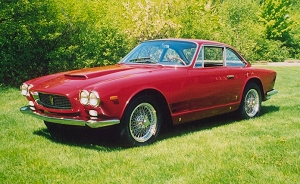 |
In 1965 a Series II was introduced with several changes to its external appearance. In Andy Heywood's article he mentions the 'influence' of Frua's Quattroporte in the design changes made to the Series II. On closer inspection these changes are more significant than I realised. The front wings have been re-designed to accommodate the chrome twin headlamp surround, similar to the Quattroporte, and other similarities include the re-designed radiator grille and the wrap around side/indicator lights. |
||
Other changes included a slimmer bonnet air vent, added air intake vents ahead of the windscreen and re-designed louvred side vents, this time mounted just behind the top of the front wheel arches. |
|||
The overall appearance of rear of the car received more 'Quattroporte' attention with its re-designed boot lid and horizontally shaped rear light cluster. Two seperate exhaust pipes exiting on either side replacing the twin tail pipes of the Series I. Internally the main changes were to the design of the dashboard with anodised rimmed instruments replacing the chrome of its predecessor. The Series II Sebring was now offered with a 3.7-litre engine producing 245bhp and later a 4-litre engine 255bhp. |
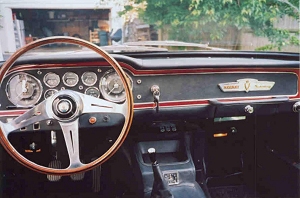 |
||
Production of the first series totalled 348 between 1962 to 1965. Production of the second series was limited to 243 cars between 1965 and 1967. Alas production was ended in 1967. |
|||
The Sebring (series I) | The Sebring (series II) |
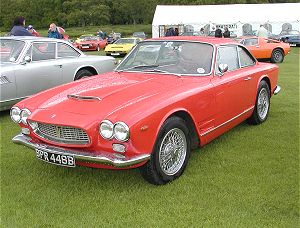 |
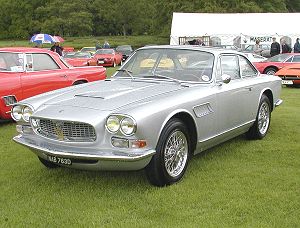 |
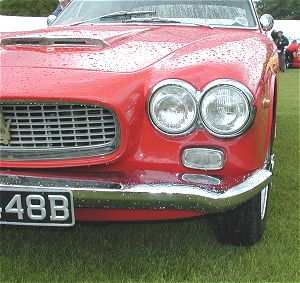 |
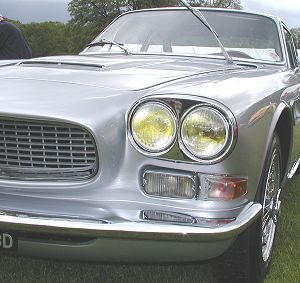 |
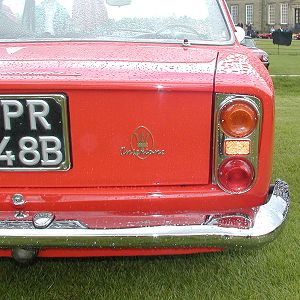 |
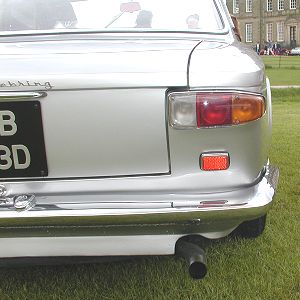 |
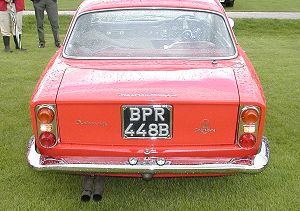 |
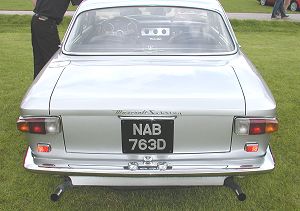 |
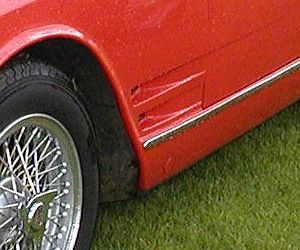 |
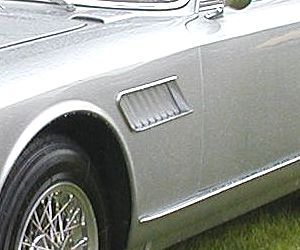 |
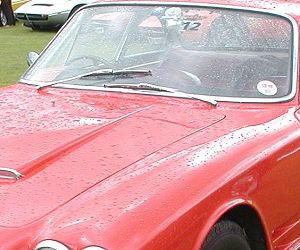 |
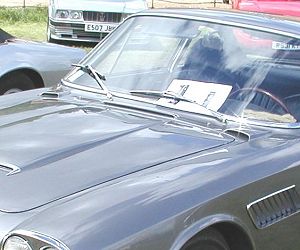 |
"Hi, |
|||
"Hi Enrico, |
|
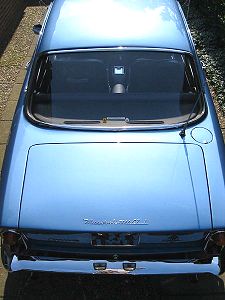 |
|
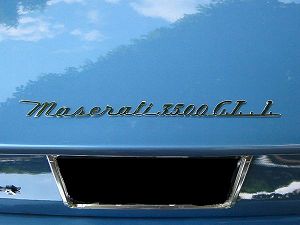 |
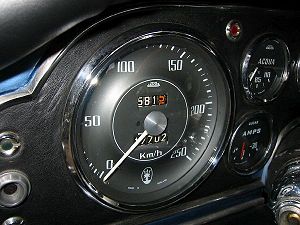 |
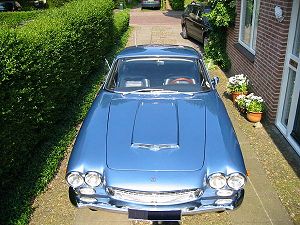 |
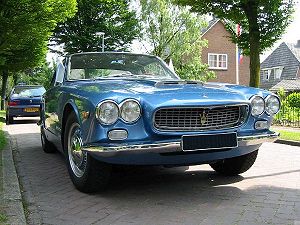 |
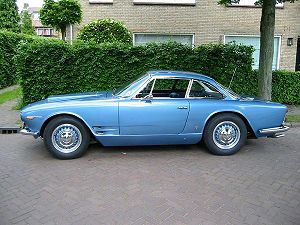 |
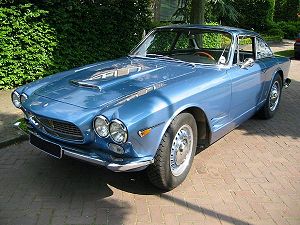 |
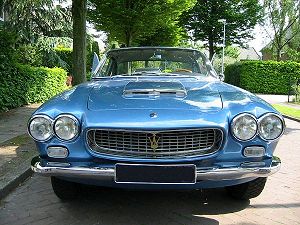 |
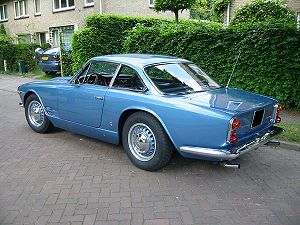 |
Ciao, |
|
| TECHNICAL DATA - TIPO 101/10 | |
| Body type | 2+2 Coupé |
| Production years | From 1963 to 1969 |
| Engine | Front engined 6 cylinder in-line |
| Bore and stroke | 86 mm X 100 mm (86 x 106 mm - 88 x 110 mm) |
| Engine capacity | 3485.3 cc (3694.4 cc - 4012.2 cc) |
| Compression ratio | 8.5:1 |
| Maximum power | 235-bhp @ 5500 rpm (245 - 255 bhp @ 5200 rpm) |
| Distribution | Two overhead camshafts, two valves per cylinder |
| Induction system | Lucas indirect fuel injection |
| Ignition | Double with Marelli distributor |
| Lubrification | Forced with pressure pump |
| Transmission | Rear wheel drive |
| Differential | Salisbury 'live' axle |
| Clutch | Dry single plate |
| Gearbox | 5 speed and reverse |
| Chassis | Welded tubular trellis |
| Front suspension:- | Independent wheels, coil-springs and telescopic shock-absorbers |
| Rear suspension:- | Rigid axle, semi-elliptical leaf-springs and telescopic shock-absorbers |
| Brakes | Hydraulically operated disc brakes on all four wheels |
| Wheelbase | 2500 mm |
| Wheel tracks | Front 1390 mm Rear 1360 mm |
| Tyres | Front:- 185 x 16 (205 x 15) Rear:- 185 x 16 (205 x 15) |
| Dry weight | 1200 kg |
| Overall length | 4470 mm |
| Overall width | 1650 mm |
| Overall height | 1300 mm |
| Maximum speed | 235 - 245 km/h |
| Models constructed | 591 |
| This rare Sebring Brochure courtesy of Marc Weijmans. | |
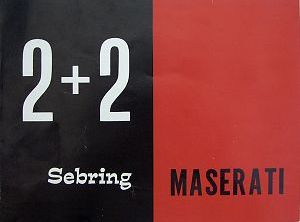 |
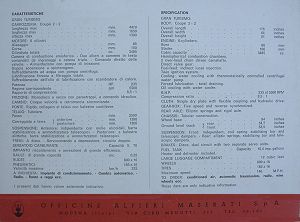 |
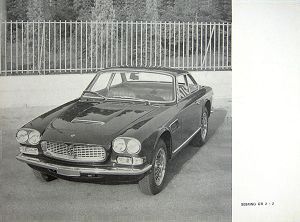 |
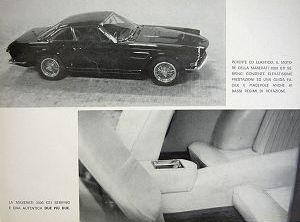 |
 |
|
To enter Enrico's Maserati Pages CLICK HERE! Copyright: Enrico's Maserati Pages - © 2000-2004. All rights reserved. |